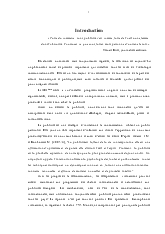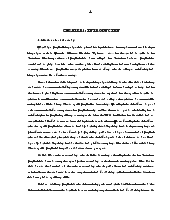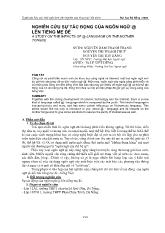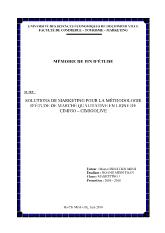Aimed at reporting the result of the examination of current final achievement test for the 12th form students at NQHS in terms of its validity
- Người chia sẻ : vtlong
- Số trang : 50 trang
- Lượt xem : 8
- Lượt tải : 500
- Tất cả luận văn được sưu tầm từ nhiều nguồn, chúng tôi không chịu trách nhiệm bản quyền nếu bạn sử dụng vào mục đích thương mại
Bạn đang xem trước 20 trang tài liệu Aimed at reporting the result of the examination of current final achievement test for the 12th form students at NQHS in terms of its validity, để xem tài liệu hoàn chỉnh bạn click vào nút DOWNLOAD LUẬN VĂN ở trên
A good test can be used as a valuable teaching device. Heaton (1991:5) states that “test may be constructed primarily as devices to reinforce learning and to motivate the student or primarily as a means of assessing the students’ performance in the language.” According to this linguist, the relationship between testing and teaching is “so closely interrelated that it is virtually impossible to work in either field without being constantly concerned with the other”. For proper evaluation and assessment of the English language learning and teaching process, testing, an important tool in educational research and for program evaluation (Lauwerys and Seanlon (1969:2) is employed as an indispensable part of the training program at Ngo Quyen high school (NGHS) in Hai Phong city.
However, the designing a good test is not simple. Having been a teacher of English for many years, I have been involved in designing, administering and marking many kinds of English tests such as progress and end-of-term tests and also have often heard teachers and test-takers at NQHS complaining that some of the final achievement tests for 12th form students do not faithfully reflect the real linguistic competence of the test-takers. What is tested is not really taught and the test measures neither the achievement of the course objectives nor the expected linguistic skills and knowledge of the students. Probably, this is because the test writers use the tests which are designed elsewhere and are not suitable for the students. What test writers are concerned with seems to be the reliability of the test rather than its validity. The situation coincides with the comments made by some test researchers as Brown (1994: 373) and Hughes (1989:1) on recent language testing, “a great deal of language testing is of very poor quality. Too often language testing has a harmful effect on teaching and learning and too often they fail to measure accurately whatever it is they are intended to measure”. Another reason is that language testing here has not been paid enough attention to. I have not witnessed either comprehensive or systematic evaluation on the effectiveness and appropriateness of these tests.
For the above-mentioned reasons, the author is encouraged to undertake this minor thesis with the aim at investigating the designing final written achievement tests for the 12th form students at NQHS through evaluating a current final achievement test by both students and teachers mainly in terms of its validity. I hope that the result of the study can then help to improve the quality of the final achievement tests for the 12th form students at NGHS.




